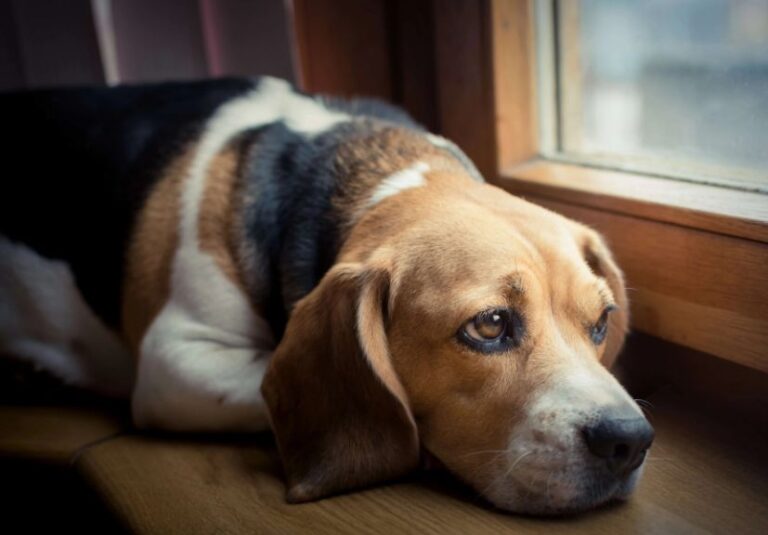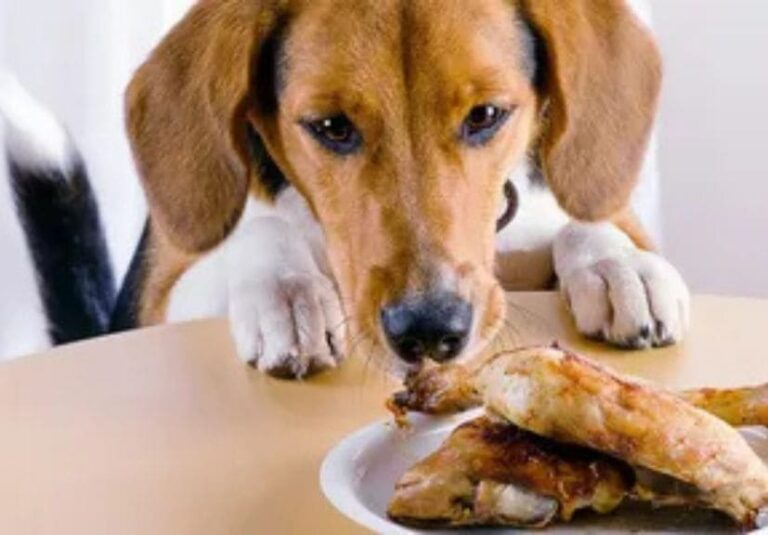Why Water Is More Critical Than Food?
Okay, let’s start with water. Imagine this – your dog spends the day playing fetch and running around, maybe it’s a hot summer day, and they’re panting like crazy. They’ll need water much faster than they’ll need food. Water is the most essential resource for your dog’s survival. According to Nom Nom, their body is made up of about more than 50% of water, and that’s important for keeping everything running smoothly.
Water is like the oil in a car – without it, things start to break down. It helps with digestion, keeps their body temperature regulated, and ensures proper blood circulation. If they don’t get enough water, you’ll start noticing signs of dog dehydration quickly. Things like:
- Lethargy (they seem way more tired than usual)
- Dry gums or nose
- Loss of skin elasticity (a simple pinch test can show this)
- Sunken eyes
- Heavy panting
Without water, a dog can survive for about 2 to 3 days, depending on factors like their size, breed, health, and the environment. In hotter weather, that window shrinks even more. So, if your dog hasn’t had access to water for more than a day, it’s time to act fast!
How Long Dogs Can Survive Without Food?
Now, on to food. Dogs, just like us, can last longer without food than they can without water. You’ve probably heard stories of lost dogs surviving for 5 to 7 days without a meal – sometimes even longer if they manage to find a source of water.
But, just because they can survive that long without food doesn’t mean they should. If your dog hasn’t eaten for a day or two, you’ll start seeing the signs:
- Fatigue (they won’t be as active)
- Weight loss (this will be gradual at first)
- Weakness
- Depression (yes, dogs can feel down if they’re starving)
For healthy adult dogs, missing a meal or two isn’t immediately life-threatening, but puppies, senior dogs, and those with pre-existing health conditions are more vulnerable. Puppies, in particular, have very high energy needs, and their small size means they deplete their energy reserves quickly. If they don’t eat, they can get hypoglycemic (low blood sugar) fast, which is a dangerous situation.
Just like with water, bigger dogs like Labradors can last a little longer without food because they have more body fat reserves. On the flip side, smaller breeds like Chihuahuas will feel the effects sooner.
Factors That Affect Survival Time Without Water and Food!
Let’s break it down a bit more – not all dogs are created equal when it comes to survival. A few factors will play into how long a dog can go without food and water:
- Size and Breed: A larger dog might have more fat reserves, but they also need more food and water. Small breeds tend to get dehydrated and malnourished faster.
- Health: Dogs with certain health issues, like diabetes or kidney problems, can’t afford to go long without food or water. If your dog already has a condition, they’ll need even more care.
- Age: Puppies and senior dogs are at much higher risk. Young pups are still developing and need proper nutrition to grow, while older dogs often have a harder time bouncing back from any sort of stress.
- Environment: Is your dog living in a cool, air-conditioned house or spending the day outside in the heat? Dogs in hotter climates are at a much higher risk of dehydration, which means you’ve got to stay on top of their water needs. For example, a dog in the desert might only survive for a day or two without water before serious health problems set in.
- Activity Level: If your dog is super active, like a Border Collie or a Husky, they’ll burn through their energy and water reserves way faster than a couch potato breed. Active dogs, especially those who love the outdoors, will get dehydrated faster if they don’t drink enough water.
Signs Your Dog Is Suffering from Dehydration or Malnutrition!
You know your dog better than anyone else, so if they start acting differently, you’ll probably notice. But, let’s break down some of the warning signs of dehydration and malnutrition so you know what to look for:
Signs of Dehydration:
- Heavy panting
- Dry mouth and nose
- Loss of appetite (they don’t want to eat or drink)
- Weak pulse
- Sunken, dry eyes
Signs of Malnutrition:
- Significant weight loss over a short period
- Dull coat (their fur looks less shiny or healthy)
- Reduced energy levels (they aren’t interested in their usual activities)
- Muscle loss (this will be noticeable over time)
- Behavioral changes (they may seem depressed or anxious)
If you’re seeing any of these signs, especially the dehydration ones, it’s time to get your dog to the vet. Dehydration can spiral into life-threatening problems like kidney failure, and malnutrition can weaken their immune system, making them more susceptible to illness.
How to Ensure Your Dog Stays Hydrated and Well-Fed?
Now that we know the risks, let’s talk about how you can keep your dog hydrated and well-fed. Prevention is always better than a cure, so let’s go through some tips.
- Always Provide Fresh Water: Make sure there’s always a bowl of clean, fresh water available to your dog. If you’re going out, carry water for them, especially on hot days.
- Wet Food for Extra Hydration: If your dog isn’t drinking much water, consider adding wet food to their diet, or even mixing a little water into their kibble. This can help them get some extra hydration without them realizing it!
- Consistent Feeding Schedule: Dogs thrive on routine, so feed them at the same times every day. This will help them maintain a healthy metabolism and ensure they’re getting the nutrients they need regularly.
- Adjust for Activity: If you’ve had a particularly active day with your dog, offer them more water and consider a snack or two to make up for the extra calories they’ve burned.
What to Do in Emergency Situations?
So, what if your dog just isn’t drinking water or refuses to eat? This can happen if they’re sick, stressed, or just plain stubborn. Here’s what to do:
- For Water: Try giving them ice cubes to lick – some dogs prefer this over drinking from a bowl. You can also flavor the water with a little low-sodium chicken broth to entice them to drink.
- For Food: If they haven’t eaten for a while, don’t overwhelm their stomach with a huge meal. Instead, offer small amounts of bland food like boiled chicken and rice.
In any emergency situation where your dog hasn’t had water for over 24 hours or food for more than 48 hours, it’s best to call your vet. Dehydration and malnutrition can progress fast, and they might need professional help to get back on track.
Conclusion
So, now that we’ve gone through it all, you have a solid understanding of how long dogs can survive without water and food. To sum it up – water is critical, and dogs can’t go more than a couple of days without it. They can survive longer without food, but that doesn’t mean it’s safe for them to do so.
Always keep an eye on your dog’s hydration and nutrition, especially in hot weather or during times of stress. And remember – when in doubt, call your vet! They’re the best resource when it comes to keeping your four-legged friend happy and healthy.
FAQs
What are natural appetite stimulants for dogs?
Various people ask “How do you stimulate a dog’s appetite naturally?” Ensure to provide the best appetite stimulants for dogs. Some natural appetite stimulants for dogs include warming their food, adding enticing smells like chicken broth, offering small meals frequently, and ensuring they’re well-hydrated.
Do dogs fight each other when they suffer food deficiencies?
Food scarcity can increase competition and let the dogs fight each other. While playful scuffles might occur, full-blown fights are less likely. Cooperation to find food or share scraps might even happen.
What else is essential for your dog’s survival, like food and water?
- Exercise: Maintains physical and mental health for your dog.
- Shelter: Protects your dog from the elements (weather extremes).
- Veterinary Care: Enables early detection of health issues, promoting a long and healthy life.
When should I worry about my dog not eating or drinking?
If your dog goes without food or water for more than 24 hours or shows any concerning signs, it’s time to see a vet. Early intervention is crucial for their health.
What happens when a dog stops eating and drinking water?
This can be a sign of illness, dental problems, emotional distress, or other issues. Refusing food and water can quickly lead to dehydration and malnutrition, both of which are dangerous for your dog.
What are the signs of dehydration in dogs?
- Dry, sticky gums and tongue
- Lethargy and weakness
- Sunken eyes
- Loss of skin elasticity (pinch test)
- Panting excessively
What to food to a sick dog with no appetite?
Never force-feed a dog without veterinary guidance. In the late stages of illness, focus on comfort and pain management. Your vet might recommend specific fluids, medications, and appetite boosters to keep them hydrated and comfortable.




